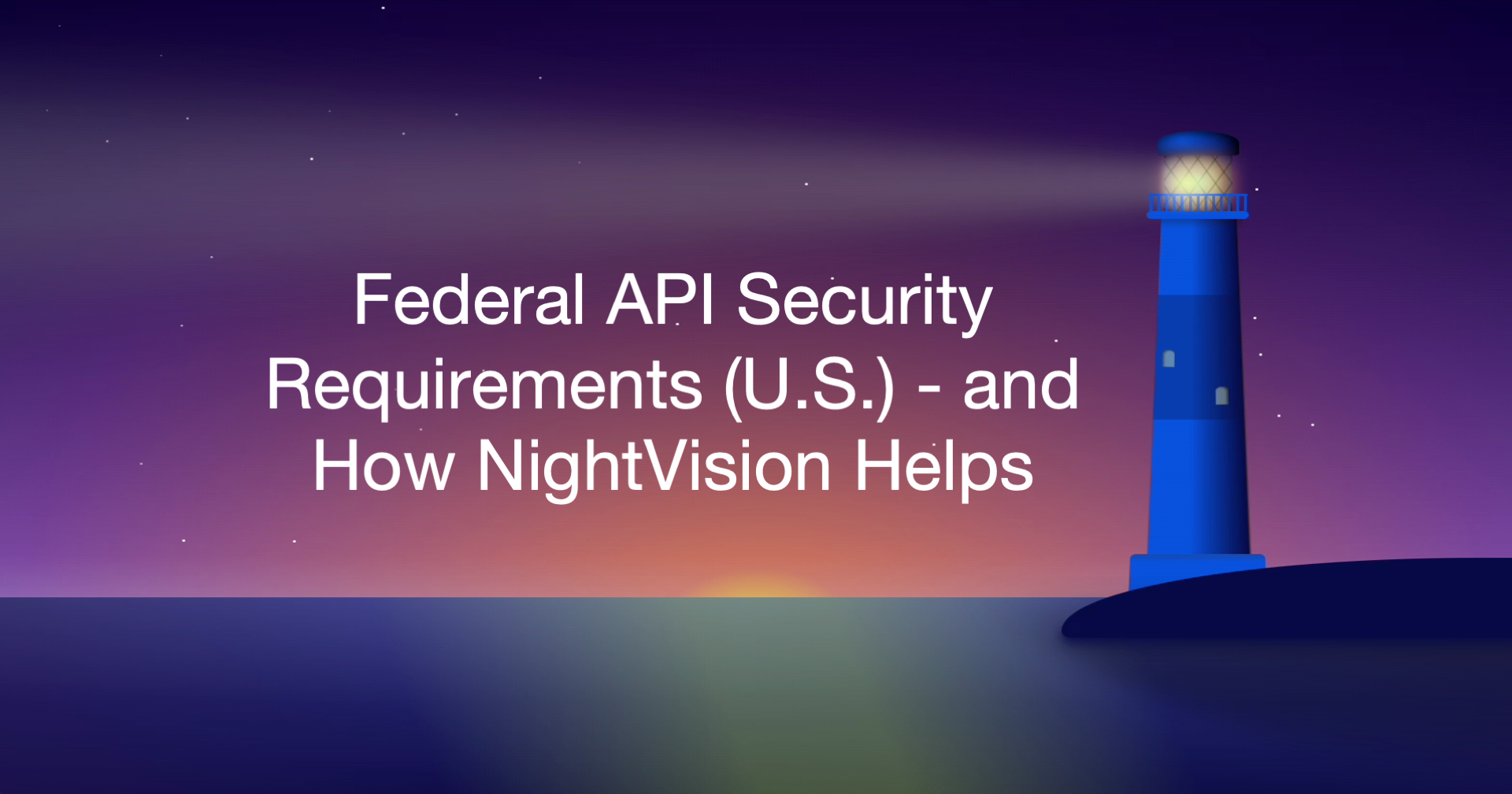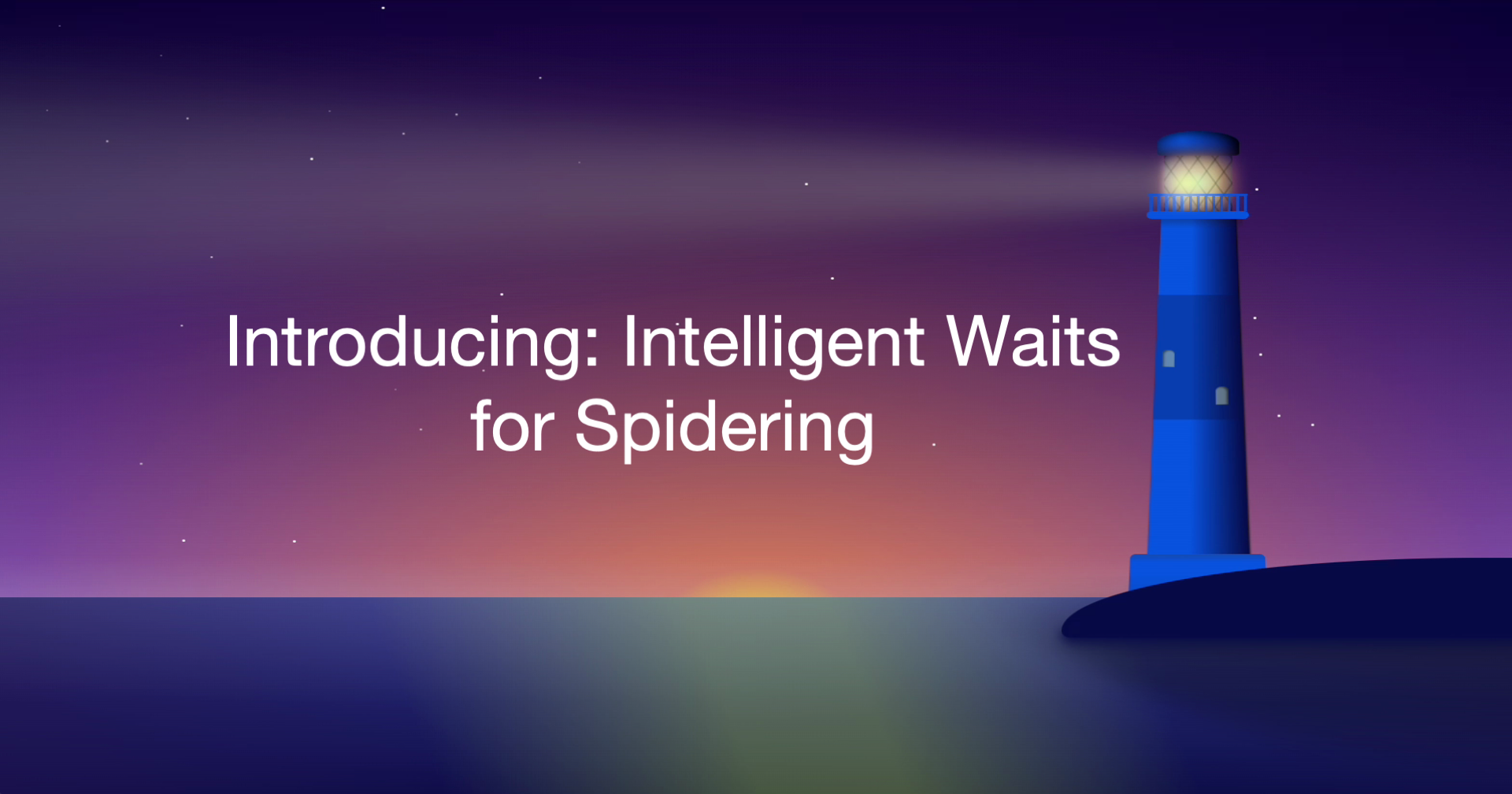Federal teams don’t just need to “be secure,” they need to prove it against specific guidance from NIST, CISA, OMB, FedRAMP, and executive orders. This blog summarizes what those mandates actually ask for and how NightVision’s approach, API eNVy for static API discovery plus gray-box DAST, helps to hit the mark.
NightVision at a Glance (for regulated teams)
- API eNVy (static): Generates OpenAPI specifications directly from source code (no run/compile), surfaces shadow/undocumented endpoints and version drift, and keeps inventories fresh via GitHub/GitLab/Bitbucket sync.
- Language coverage: Java, Python, JS/TS, .NET, Go, Ruby (PHP in progress).
- Gray-box DAST: Discovery-driven dynamic testing with working auth/state handling, so scans exercise real, authenticated flows and return evidence-backed results.
- Auth gap detection: Identifies missing or weak authentication and can open PRs automatically to remediate.
Why this pairing matters: static discovery ensures you test what actually exists, while DAST verifies how it behaves under real conditions.
Requirement-by-Requirement Mapping
NIST SP 800-204 Series (microservices/API security)
What the guidance says: NIST’s 800-204 family lays out microservices security patterns: service mesh for identity, policy enforcement, and mTLS; API gateway patterns; and ABAC for fine-grained authorization in cloud-native systems. DevSecOps is expected with security integrated into CI/CD, policy-as-code, and observability-as-code. (NIST CSRC)
How NightVision helps:
- API eNVy extracts real endpoints and parameters from code to seed gateway/mesh policies and generates accurate OpenAPI that matches production, enabling least-privilege routing and reliable authZ scopes.
- DAST then exercises those endpoints (including authenticated paths) to produce request/response evidence that hardens gateway defaults and validates ABAC policies (e.g., object-level access).
Takeaway: Use the code-derived inventory as the single source of truth for your policy-as-code, then backstop it with evidence from dynamic tests, exactly the lifecycle NIST 800-204 promotes.
CISA Zero Trust Maturity Model (ZTMM v2.0)
What the guidance says: CISA’s ZTMM defines five pillars: Identity, Devices, Networks, Applications & Workloads, and Data. It expects strong authentication, encrypted traffic, continuous testing/monitoring, and treating apps as internet-accessible by default. Agencies should progress from traditional to optimal maturity with rigorous testing programs. (CISA)
How NightVision helps:
- Applications & Workloads: Discovery-led DAST gives you “rigorous empirical testing” inputs and coverage reporting across routes/endpoints, helping teams demonstrate maturity beyond point-in-time scanning.
- Data & Visibility: NightVision’s evidence (requests/responses, replay steps) integrates with SIEM/SOAR for continuous monitoring and ATO packages, supporting the ZTMM’s visibility and governance expectations.
Takeaway: Show progress on the Applications & Workloads pillar with measurable coverage and verified findings, not just scanner counts.
FedRAMP (NIST 800-53 Rev. 5–based)
What the program requires: FedRAMP Rev. 5 aligns to NIST SP 800-53 Rev. 5 control baselines and strengthens annual assessment/ConMon expectations, including vulnerability management, logging/monitoring, and secure engineering practices across AC, AU, CM, SC, and SI families. Recent updates add clearer scanning and container reporting guidance. (FedRAMP, FedRAMP Help)
How NightVision helps:
- Controls alignment: Evidence-backed DAST findings plus code-derived API inventories support AU/SI narratives (what was tested, proof of exploit, remediation status) and inform AC/SC control implementations (authZ scopes, transport protections).
- ConMon ready: API eNVy’s continuous sync with Git repos reduces drift between deployed services and documented APIs, improving change control (CM) and keeping test scope aligned with reality month-over-month.
Takeaway: Pair continuous inventory with evidence-rich testing artifacts to simplify SSP updates, annual assessments, and monthly ConMon submissions.
Executive Order 14028 (Improving the Nation’s Cybersecurity)
What the EO emphasizes: Modernizing Federal cyber via Zero Trust, secure development, automated vulnerability discovery/remediation, robust logging, and SBOM practices, plus attestation and coordinated disclosure. (The White House)
How NightVision helps:
- DAST operationalizes “test like an adversary,” producing reproducible exploit evidence you can attach to remediations and POA&Ms.
- API eNVy maintains accurate API inventories/specs, which support SBOM-adjacent efforts (clear service boundaries and dependency provenance) and help ensure scanners cover the whole surface area.
Takeaway: Use NightVision artifacts to back EO-driven attestations with concrete proof and to keep SBOM-related inventories honest.
OMB M-22-09 (Federal Zero Trust Strategy)
What the memo directs: Phishing-resistant MFA, encrypted DNS/HTTP, treating internal applications as internet-accessible, and routine, rigorous testing of applications, paired with public vulnerability disclosure and continuous modernization. (The White House)
How NightVision helps:
- Gray-box DAST turns the memo’s “rigorous empirical testing” requirement into an operational practice, with artifacts suitable for governance and POA&Ms.
- API eNVy keeps the live application inventory and current endpoints in sync with gateway policies as teams expose services, supporting the strategy’s “treat as internet-accessible” posture.
Takeaway: Evidence-based testing and an always-current API catalog make it easier to satisfy the memo’s testing, identity, and application security milestones, and to show progress to leadership. (For data-pillar follow-through, see the 2024 Zero Trust Data Security Guide.) (CIO.gov)
Implementation Playbook
- Inventory from code first. Use API eNVy to extract endpoints, parameters, and auth requirements from source across repos; generate OpenAPI/GraphQL; tag owner/team and sensitivity. This becomes the input to your gateway/mesh policy and your DAST scope.
- Wire up auth once. Record login and token refresh flows (user and service identities). Store secrets per environment and include role/tenant matrices so tests validate authZ paths, not just 200/401s.
- Right-size scanning.
- PRs: 2–5 minute checks on changed endpoints.
- Main: Balanced depth; block on verified criticals.
- Nightly/Off-hours: Deep traversal with full auth matrices and rate-limit awareness.
- PRs: 2–5 minute checks on changed endpoints.
- Safety and signal. Respect WAF/rate limits; mask secrets; require request/response evidence for triage. Pipe artifacts to your SIEM and continuous monitoring workflows.
- Ratchet coverage. Track endpoint and auth-matrix coverage as a KPI alongside MTTR; fail builds on new gaps and criticals.
Federal guidance is converging on a clear theme: keep an authoritative inventory, enforce strong identity, test continuously, and prove it with artifacts. NightVision’s static-plus-dynamic model, API eNVy feeding gray-box DAST, lets you do exactly that while reducing noise and drift. You get higher coverage, lower false positives, and cleaner audit trails, so your teams can spend more time fixing real risks and less time wrestling with tooling.
Schedule a NightVision Demo


.svg)




.svg)